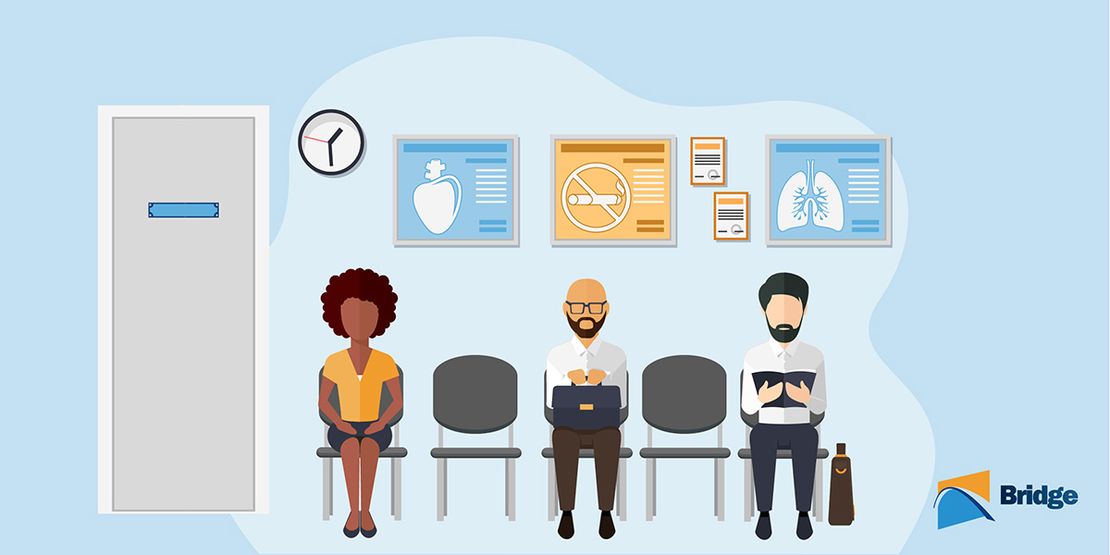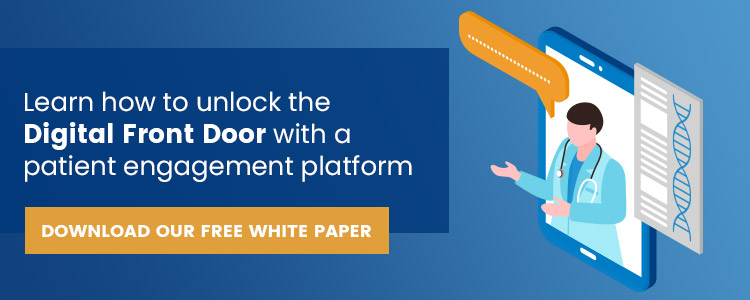The Virtual Waiting Room: The Latest in Patient Self Check-In Systems
- John Deutsch
- June 25, 2021

The healthcare industry has undergone significant changes in the past couple of years, especially in the arena of digital patient engagement. Consumer needs and expectations began to change during the pandemic, urging providers to swiftly adapt and offer both virtual and in-person services to ensure continuity of care.
Even when in-office visits are required, many patients have become cautious of spending time in waiting rooms due to fear of infection[¹]. Additionally, since more people are using telehealth[²], providers must find innovative ways to virtually engage patients at various touchpoints occurring outside the traditional waiting room, such as virtual intake and patient self check-in systems, online patient management prior to an appointment, and follow-up processes post-appointment.
As a result, the virtual waiting room has become a prominent feature of patient intake software and has seen rapid growth because it allows providers to efficiently gather and organize the information they need from patients without disrupting workflows, while also giving patients more freedom and convenience when it comes to preparing for their appointment.
The Virtual Waiting Room
A virtual waiting room (also referred to as a mobile waiting room or zero-contact waiting room) is a service that enables healthcare consumers to use patient self check-in systems for in-person and virtual visits, complete paperwork digitally, receive instructions and safety protocols before an in-person visit, and be notified when their doctor is ready to see them and where the exam room is located.
Some useful features that healthcare organizations should consider including as part of their virtual waiting room include messaging and notifications, online forms for intake, and bill pay.
Patient Messaging
An efficient virtual waiting room includes bidirectional patient messaging, which allows for bidirectional communication with the patient and clinician/admin staff.
Customized messages and notifications with relevant information about an upcoming appointment, such as safety protocols, where to wait, approximate wait times, where to enter the building if it is an in-person appointment, and other information, can be crucial to ensuring a smooth check-in. Providers can also send personalized patient education and marketing materials to consume while they wait for their appointment to begin.
Online Forms
Allowing patients to complete necessary HIPAA compliant patient intake forms or surveys online prior to their appointment should be a feature of any virtual waiting room. All forms are also integrated with a practice’s source systems including Electronic Health Records (EHR), Revenue Cycle Management (RCM), or Practice Management (PM) software, increasing efficiency and streamlining workflows for providers.
Online Bill Pay
Within a virtual waiting room, an online patient payment solution allows patients to securely view and pay their bills in advance. They can view itemized costs as well as outstanding balances, receive reminders about when bills are due, and set up payment options that best work for them.
Patient Self Check-In Systems Are Here to Stay
For in-office and telehealth visits alike, virtual waiting rooms are replacing traditional waiting rooms and providing more efficiency and convenience for patients and providers. Messaging, online forms, and bill pay should be essential features for any virtual waiting room since they have the ability to deliver a smoother check-in experience and set the tone for the actual encounter, while simultaneously decreasing staff workload.
- J.D. Power. (2020.). U.S. Telehealth Satisfaction Study. [online] J.D. Power. Available at: https://www.jdpower.com/sites/default/files/file/2020-09/2020124%20U.S.%20Telehealth%20Study%20v2.pdf
- DeSilva, J. Zweig, M. (2020.). Digital Health Consumer Adoption Report 2020. [online] Rock Health. Available at: https://rockhealth.com/reports/digital-health-consumer-adoption-report-2020/
